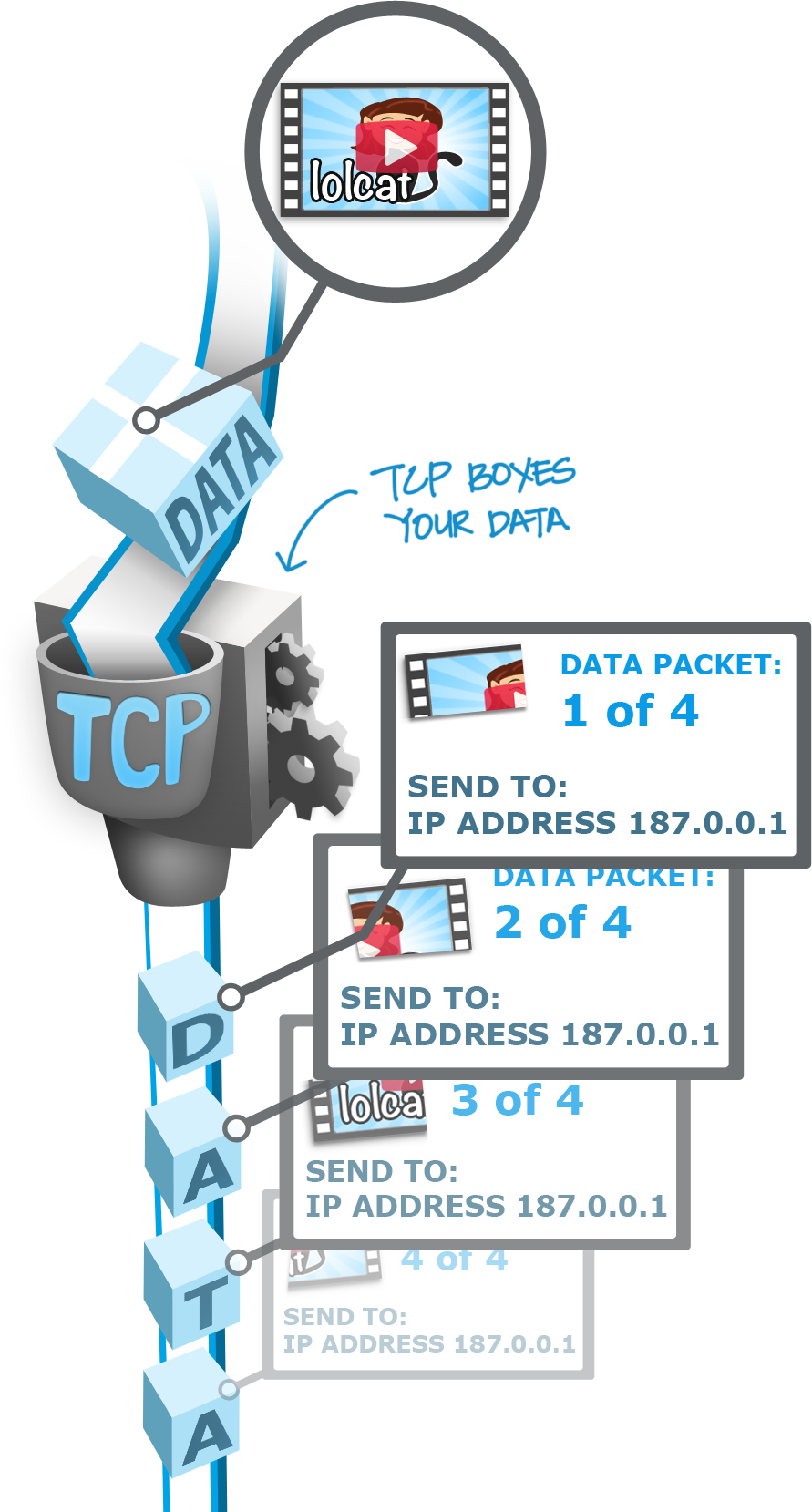SendFaster TCP Acceleration
When your packets of data travel from one computer to the other, TCP provides each packet with a unique tag containing a wealth of information, such as the order in which the packets should be assembled with other related packets. As the TCP engine creates each packet, it calculates a "window" value indicating how many packets can fit through the connection in the current round of data transfer.
While the packets successfully reach their destination, the window gradually increases indicating that more data may be sent in the next transmission round. As the packets are passed from router to router, some of them may go awry and fail to reach their destination. Such losses were thought to spring from routers which received more data than they could successfully pass on.
When a packet is lost, the sending computer has to resend all packets starting with the lost packet. In order to combat these "overflow" losses, a single lost packet requires that the window shrinks by a factor of two, effectively halving the speed of your connection to the internet.
When your packets of data travel from one computer to the other, TCP provides each packet with a unique tag containing a wealth of information, such as the order in which the packets should be assembled with other related packets. As the TCP engine creates each packet, it calculates a "window" value indicating how many packets can fit through the connection in the current round of data transfer.

While the packets successfully reach their destination, the window gradually increases indicating that more data may be sent in the next transmission round. As the packets are passed from router to router, some of them may go awry and fail to reach their destination. Such losses were thought to spring from routers which received more data than they could successfully pass on.
When a packet is lost, the sending computer has to resend all packets starting with the lost packet. In order to combat these "overflow" losses, a single lost packet requires that the window shrinks by a factor of two, effectively halving the speed of your connection to the internet.

When TCP was designed in the 1970s and 1980s to run on relatively reliable telephone and fixed lines, such a drastic change to the window size made sense. With the modern internet, however, many connections contain segments on less reliable connections, such as WiFi, 3G and 4G. In these cases, single packets are lost to a variety of random events, such as sun spots, radio interference and a bird flying between you and a cell tower. Such a lost packet does not indicate that the connection is overloaded — it is simply a random event.
SendFaster™ takes a more intelligent approach to your connection. Using state of the art predictive and learning algorithms SendFaster™ accurately assesses whether packet loss comes from overloaded routers or simply random noise. By constantly learning the behavior of your connection, SendFaster™ accurately identifies random loss events, keeping your connection at top speed much more of the time. Because of these improvements in the TCP engine, SendFaster™ effectively increases your connection speed by as much as 500%.
